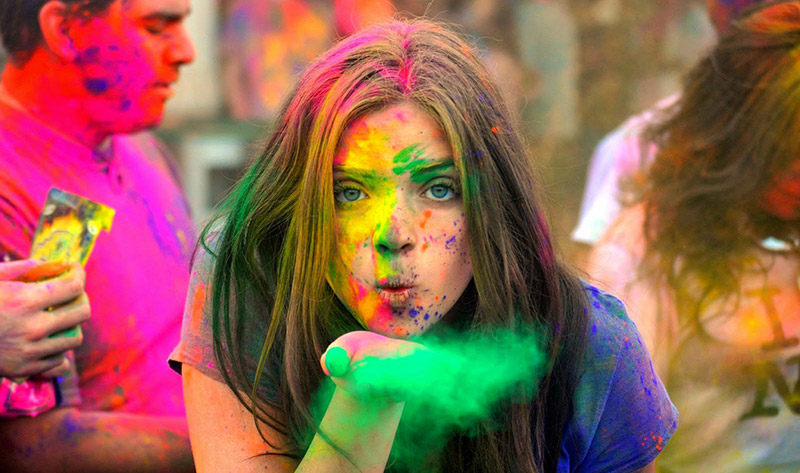Holi, is a religious spring festival celebrated by Hindus. Holi is also known as festival of Colours.
Chemically produced industrial dyes have been used to take their place in almost all of urban India. Lack of control over the quality and content of these colours is a problem, as they are frequently sold by vendors who do not know their origin.
The colors used during Holi include various synthetic dyes like malachite green, auramine, methyl violet, rhodamine and orange II. These are often mixed in a base material like starch or wheat flour. At times, even mica dust is added to them to increase their shine. Holi colours often adulterated with lead oxide, engine oil, diesel, chromium iodine, copper sulphate, and rhodamineb – all harmful to the human body. Most of these chemicals are phototoxic and incite skin allergies. Use of mica dust can lead to multiple microtrauma of skin and predispose to infections. Also, use of contaminated starch or wheat flour can further increase the chances of skin or ocular infections.
The black powders were found to contain lead oxide which can result in renal injury. Two colors were found to be carcinogenic: silver, with aluminium bromide, and red, with mercury sulphide. The prussian blue used in the blue powder has been associated with contact dermatitis, while the copper sulphate in the green has been documented to cause eye allergies, puffiness of the eyes, or temporary blindness, gulals, can be toxic, with heavy metals causing asthma, skin diseases and temporary blindness. Thus, the dangerous side effects of Holi colours can ruin the spirit of the festival.
There are reports of the wet colors leading to skin discolouration and dermatitis due to their use of color concentrate gentian violet.
Alternatives like vegetable dyes lack the mechano-abrasive and phototoxic properties of synthetic dyes. Use of such non-toxic colors should be encouraged.
Avoiding wet colors will also help to save water. Use of dry colours to minimum possible extent and also less use of wood for holi dahan will reduce deforestation and air pollution.



Leave a Comment